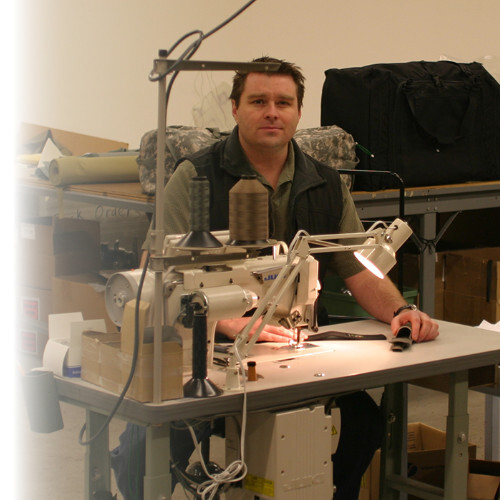
Logan D. Coffey
5/4/73 - 4/20/08
On April 20th, 2008, Tactical Tailor’s president and founder, Logan D. Coffey, was killed in a tragic car accident. His legacy will live on through his company, thanks to his brother, Justin, and the dedicated employees who are still working hard to continue the mission that Logan started.
The following is a brief history of Logan Coffey and the company he created, as written by his father, Larry Coffey.
The Story Began in Late 1991
When immediately after high school, Logan Coffey enlisted in the United States Army Infantry. Logan’s first assignment after basic training was with the 25th Infantry Division at Schofield Barracks, Hawaii; assigned to the Scout Platoon. Ironically this is the same place that Logan’s father had been stationed 26 years earlier in 1965 and 1966 during the Vietnam conflict.
Logan’s first week of training in field maneuvers in the steep hills and gulches on the Island of Oahu proved that his army-issued gear was incredibly uncomfortable and impractical. He found out that most of his issued gear was of the same design that his father had been issued 26 years earlier and used in the Vietnam War.
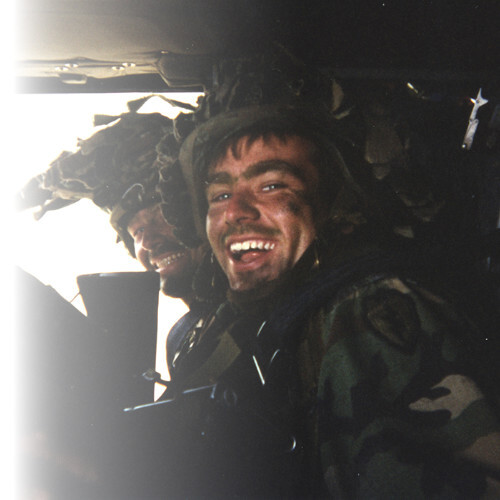
After the first week of training Logan realized that the army-issued gear needed a lot of modifications and changes if it was going to be more comfortable and practical in field maneuvers. Logan made it his personal mission to update and modify his issued gear to where it would be more practical and comfortable.
Since Logan had always been a person that liked to invent and tinker with new ideas he went out and purchased a sewing machine from Sears so he could start making modifications and designs that would help him in his daily missions.
The sewing machine could not stand up to the industrial type of sewing that Logan was doing so it quickly wore out and he had to buy an industrial machine. Finding an industrial sewing machine that a private in the Army could afford was challenging but he soon found a used machine at a second hand store that he fixed so he could start building, modifying, and inventing new military gear that helped him as well as the guys in his platoon become more proficient.
Logan was becoming very good at the modifications and had moved up in rank to become a sniper in his battalion’s scout platoon. This position allowed him to test his modified gear in a harsh and real world environment.
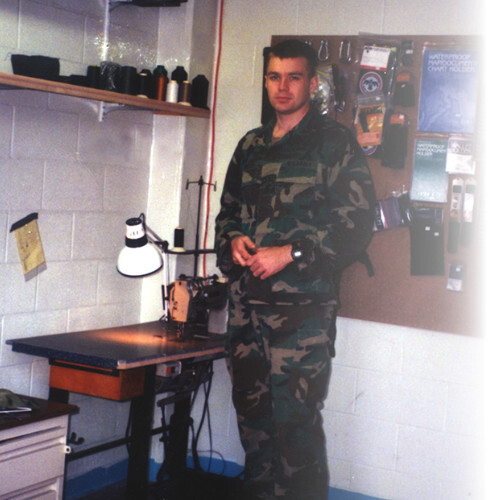
Training the Tailor
A few years went by and Logan’s barracks room began to look more like a workshop than a military barracks room. Logan was always looking for more machines and was able to find another used industrial sewing machine. Now he had two machines in case one was broken, which seemed to be the case a lot of the time.
He had dozens of small rolls of fabric that he would find at the different shops around town. Logan was beginning to be known around Schofield Barracks as the guy to go to if you needed help to get any military gear worked on. Logan’s specialties started out as rucksack modifications and ghillie suits but he also began building bags and packs of his own design. All of Logan’s spare time was consumed by sewing and designing new gear.
Five years had passed and Logan was now stationed at Fort Lewis, Washington and was nearing the end of his second enlistment. By now he was very well known at Schofield Barracks and Fort Lewis as the guy that knew how to make modifications or that could design new ideas to make the military gear more efficient and comfortable.
Logan Leaves the Army
Logan made a decision to leave the Army at the end of his second enlistment and to see if he could turn his passion of modifying and designing military gear into a business and offer his products to all branches of the military and law enforcement agencies. So in January 1998 the Tactical Tailor was officially started in Lakewood, Washington.
Logan was able to rent a small 2 bedroom house with a one car garage where he started the Tactical Tailor. The garage had the 2 sewing machines set up to sew the fabrics and the kitchen table was set up as a cutting board to cut the material. The spare bedroom was the junk room where all the fabric and supplies were stored.
Word quickly got around Fort Lewis and soon he was doing modifications for the local military. He hired an Army spouse to help with the sewing and soon the business was started.
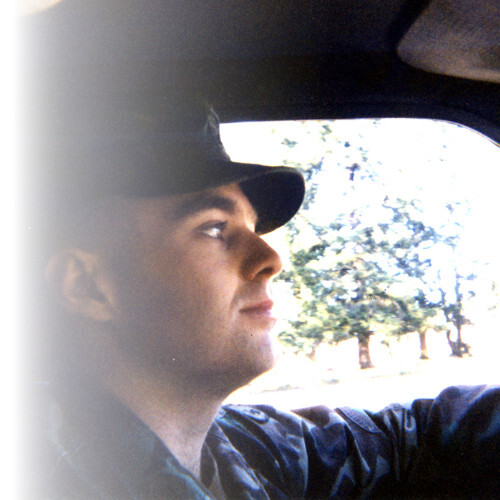
Logan didn’t have the money to buy much fabric or supplies so he asked his parents if they could loan him several thousand dollars to start the business.
This allowed Logan to purchase some better supplies the fabric he needed. He was able to repay the small loan in six months. Logan worked out of his garage for a couple of years and finally had out grown it and needed more space.
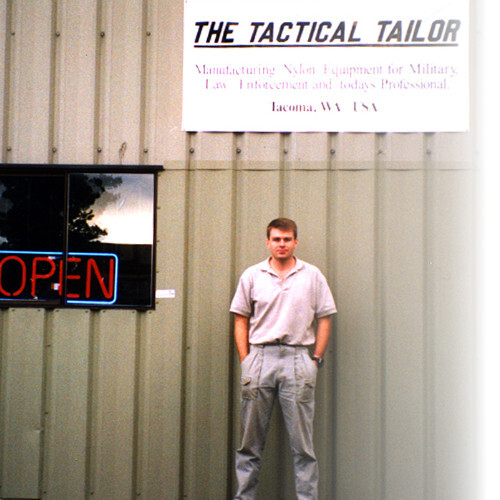
The Tactical Tailor is Born
Logan was able to find a warehouse with approximately 3,000 square feet but he couldn’t afford it and a house to live in both so he decided to build a sleeping room in the loft of the warehouse. This became his home, work area, and retail store all in one for the next two years. Logan began to design more and more military gear and all of it was so well built that it was in big demand. He would go to auctions and was able to purchase a few more sewing and cutting machines.
He hired a couple more people to help him and taught them how to sew to his standards. He always tried to hire ex-military, retired military or military spouses as he knew the financial hardships that most military and dependents encounter. The business was still growing and the location of his store and warehouse was not in a real desirable part of town and didn’t have enough parking for customers so he began to look for a larger area.
In 2002 Logan was able to find another warehouse that had approximately 5,000 square feet of space so he decided to expand his business. Once again he had to build a sleeping area in the warehouse as he couldn’t afford both the rent for a house and the warehouse at the same time. The added space allowed him to add more sewing machines, cutting tables, and area for fabric storage.
He continued to go to auctions and second hand stores in search of old industrial sewing machines and supplies needed for the manufacturing of his military and law enforcement gear. He was able to find older machines and he was getting quite good at repairing them. Customer parking was always a problem and having living, working, and retail all in the same was not the most desirable. Logan finally moved out of the warehouse into a small house in 2003 and quickly converted the additional space into a more productive retail space.
Rapid Growth
Logan purchased a large warehouse in 2005 and moved his manufacturing portion of the business there so he would have the space to add more computerized cutting machines, injection molding machines, computer controlled embroidery machines and have the space needed for storing, assembling, boxing, and shipping of gear. With the separation of the retail and warehouse stores it has made the business more manageable and has added the parking space needed by both customers and employees.
Logan travelled across the United States to various trade shows and continually showed his gear to the military and law enforcement agencies. He was always generous and gave many samples of his gear to the folks he met. His gear is known all over the world and is being used by many military personnel in Iraq and Afghanistan today. He has been invited to the Pentagon on several occasions and to the various military academies to give speeches and to show his gear.
